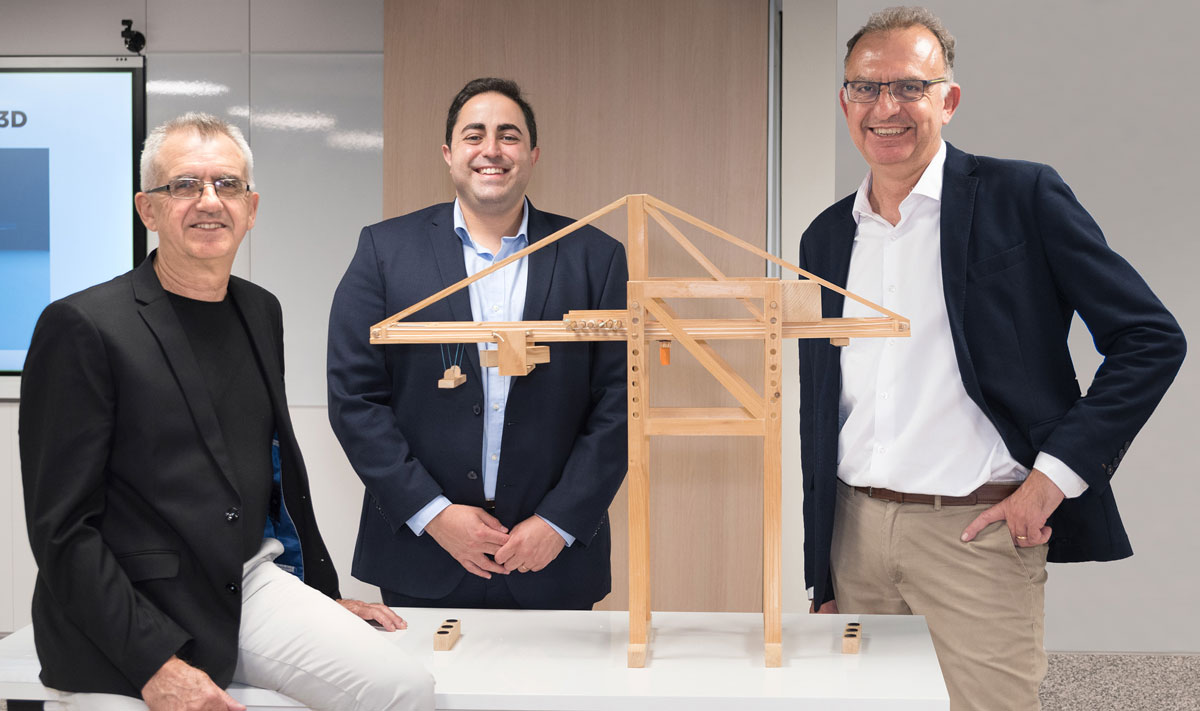- This new system which, among other advantages has an energy efficiency that is always superior to the rest of STS cranes, offers an average total savings per container of 15€, which translates into large ports that discharge 6.3 million containers per year saving 94,500,000€
- Its counterweighting system allows large ports to save tens of millions of CO2 kg, a leap in environmental quality that reduces emissions by 51% at least
- "STS Transfer Line is to the maritime industry what the ABS brake is to the automotive industry," says its inventor, stressing that this implementation will mark a turning point in the port sector
Currently, about 3.4% of the containers going from ship to shore are monitored in ports. This is a statistic directly related to a structural safety problem, which in itself justifies the implementation of a crane model that can automatically scan 100% of these containers without any logistical cost. This is one of the main reasons for the STS Transfer Line, a new internationally patented system whose application translates into container cranes with an energy efficiency higher than 70%, an alternative that also boosts performance: they are capable of discharging 2.6 containers at the same time as current cranes discharge 1.
Automated transfer system between straight sections. It is the technical definition of a very particular ship-to-shore model. It avoids load swinging, so it is also safer; it facilitates the work since the crane operator only has to be aware that there is no element underneath; and it is more productive since it allows a greater number of cranes working simultaneously on the same ship, as well as the traffic of auxiliary vehicles with independent circuits. These are direct consequences of a commitment to innovation, the culmination of which is a mechanized 90-degree turn of the load around its vertical axis that is carried out at the beginning of the transfer, and which originates both the scanning process and full automation.
Specifically, key aspects such as productivity, performance, and efficiency explain the interest that this new patent is already beginning to arouse in both ports and crane manufacturers. The industrial draftsman and inventor of this system, Juan Carlos Barberá, exemplifies the profitability of the STS Transfer Line as follows: "The average savings per container are 15€, so we are talking about 94.5 million € of annual savings in ports that unload 6.3 million containers a year".
A quality leap in terms of profitability is generated, among other qualities, by energy efficiency directly related to a system of counterweights between payloads (similar to that of an elevator). The lowering container acts as a counterweight to the lifting container on the opposite side, a process that the designers themselves clarify in the most visual way possible on their website and which translates into another overwhelming statistic confirmed by its inventor: "The study carried out by the project engineers establishes energy savings of over 70%".
The reduction of CO2 emissions will always be greater than 51%
In addition to all the energy and cost savings, this new counterweighting system has a direct and positive impact on the environment. Only thanks to this specific mechanism it is possible to reduce CO2 emissions by at least 51%. From a more specific approach, and emphasizing the scales used by professionals in the sector, the average reduction in emissions exceeds the figure of 1.55 kg CO2/TEU, an indicator that refers to emissions per unit of load moved, another of the factors behind the multimillion-dollar savings.
But regardless of the strictly technical aspects, and to fully understand the role of this new patent, its promoters, of Spanish origin, cite as example models that have also brought about a structural change in their industries: "The STS Transfer Line means to the maritime industry what the ABS brake means to the automotive industry". As was the case with vehicle manufacturers, both ports and crane manufacturers now have at their disposal a new element with a high degree of impact.
Safety, performance, energy savings, sustainability, and operability.
The crane had to be safer, more efficient, more sustainable, and make life much less difficult for workers. From the beginning, these key concepts marked all the research for a project that has just come to light after more than 4 years of work and investment in R&D. In short, features that make container terminals, crane manufacturers, and even the governments themselves stakeholders. In the words of the CEO of the company, Víctor Barberá, "This is the only crane on the market capable of combining safety, performance, energy savings, sustainability, and operability".
Everything related to sales and increased profitability goes hand in hand with the objectives of the manufacturers in the sector. However, as the STS Transfer Line’s marketing and sales director, Ricardo Moncho, points out, the sustainable commitment has also reached the strategy of manufacturers and states: “We are reaching a stage where the environmental aspect has become a key strategic focus for ports and politicians, and this is also part of our raison d’être. We are proud to be a regenerative company and to contribute to society by working structurally for a better environment”.
It is a project designed to have an impact beyond manufacturers to ports, and even to the public interest. “Talking about security means talking about factors that you cannot put a price on. The value of being able to prevent an attack or detect a shipment of narcotic substances goes far beyond the numbers”, concludes Juan Carlos Barberá, referring to a new system that, from the moment he began to imagine it, already went far further than a new and more productive type of the STS crane.












